Life Energy Beliefs
N
Life Force Ideas Around the World
Here are the N entries of life energy beliefs around the world and from antiquity to the present. An edited and expanded version of this Life Energy A to Z is published in my book
Life Energy Encyclopedia.
N
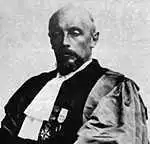
N-rays is an expression introduced in 1903 by the French physicist René
Prosper Blondlot (1849-1930), for a radiation from just about all matter,
which he claimed to have discovered. It got its name from Nancy, the city
of his habitat. Later on, the radiation of his description was proven not to
exist.
Nafs see ruh.
Nagi see ni.
Naran see ruach.
Nature's healing force see vis medicatrix naturae.
Nefesh see ruach.
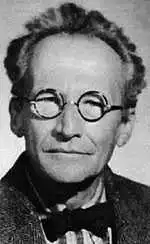
Negative entropy is an expression from the book What is life?, 1944, by the
Austrian physicist Erwin Schrödinger (1887-1961). He described living
organisms as involved in a process toward increasing entropy (energy in
such a disorderly form that it is no longer usable), with death as the
optimal stage of entropy. Therefore, what each organism needs as a kind
of nutrition is negative entropy, in such a way that it gains order from its
surroundings. This cycle is one where orderly structures are consumed,
having less order when they are disposed. All of the universe can be
described as dynamics between positive and negative entropy. The
shortened term negentropy is used by some. The expression is sometimes
mentioned as a synonym to life energy such as qi, which is doubtful. See also free energy.
Neo-vitalism see vitalism.
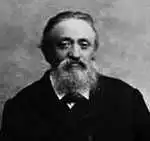
Nervous ether is an expression used by the English physician Benjamin
Ward Richardson (1828-1896), who was particularly active with new
means of anaesthetics (for example by using diethyl ether) and pain relief.
Regarding nervous ether – referring to an ether in contact with the nerves
and senses – he had in mind a substance or possibly an energy, which
transferred impulses between the smallest components of the body, so that
they could interact. Any closeness to life energy is unlikely.
Neshamah see ruach.
Neuric force (in French force neurique) is an expression introduced 1887 by
the French physician Alexandre Barety (-1919), for an energy flowing
through and out of the body, which he claimed to have observed on his
patients.
Neutral force is an expression used in modern interpretations of Kabbalah,
the Jewish mystic cosmology, for a creative force that was active at the
birth of the universe. The traditional root of this concept is doubtful, since
the neutral is next to impossible in a cosmology containing a supreme god.
In this line of thought, there is talk about a positive, a negative, and a
neutral force. The three of them are compared to the atom's proton,
electron, and neutron, and also to three spiritual aspects: the soul's wish to
share, the ego's selfish desire to take, and the free will's opportunity to
choose between them. The expression is sometimes mentioned as a
synonym to life energy such as qi, which is doubtful.
Neutricity is a term introduced by Jerry G. Gallimore (1940?-1988) for
supraconducting properties of materials in room temperature, instead of
temperatures close to the absolute zero that the laws of physics demand.
He saw it as the combined effect of three energy forms – electricity,
magnetism, and gravity. It is sometimes mentioned as a synonym to qi,
which is doubtful. In 1975 Gallimore founded United States Psychotronic
Association, an organization that researches the relation between
consciousness, matter, and energy.
Neutrino field see gravity field energy.
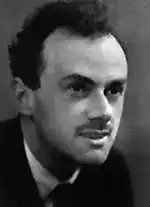
Neutrino sea is an expression for a form of ether consisting of uncharged
particles in the cosmos, created by the nuclear reactions inside the stars.
The theory originated with the English physicist Paul Adrien Maurice
Dirac (1902-1984), who raised the thought in a 1951 Nature article entitled
“Is there an ether?” See also Kozyrev-Dirac emanation.
Ngai is the name of the creator deity of the Masai in Kenya. He was the
husband of the moon and lived on a mountain top. Ngai gives each
newborn human a protective spirit that leads them on after death. Ngai is
sometimes mentioned as a synonym to the life energy qi, but this protective spirit is
probably a better candidate. Ngai is also connected to heaven and the rain.
Ngewo see mulungu.
Ni is the life force among the Oglala Indians of the Dakota tribe. Ni is
likened to breathing and the shadow. At death it leaves the body. The
Oglala also have nagi, a soul-like part that remains after death, and sicun,
one's shadow, which is also a kind of protective spirit.
Nimbus is Latin for 'rain cloud' or 'sky'. It was used in classical
mythology for a cloud that a god could hide behind, when descending to
Earth. For a long time, the word has been used in the meaning radiance or
shimmer, an attractive emanation comparable to charisma and luster (see
these words). See also aura.
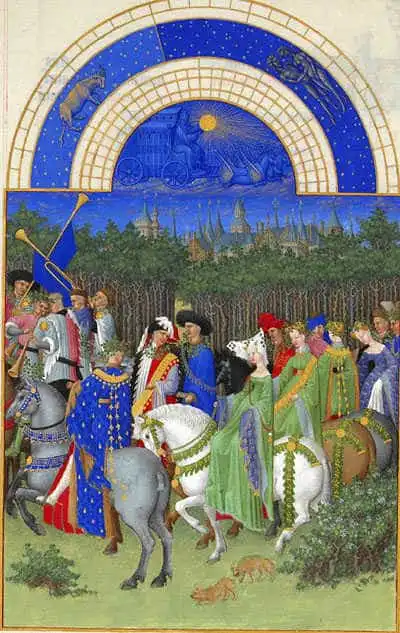
The sun god Helios riding the sky on a nimbus cloud. From a Medieval calendar.
Njom is the word for remedies against evil magic, among the Banyang
people in Africa, an art given to them by their deity, performed with both
herbs and magical rituals. It is sometimes mentioned as a synonym to life energy such as qi,
which is doubtful.
Njomm is among the Ekoi Indians a magical force of vague but wide
significance, which can protect against evil as well as cause harm. Njomm
seems to have personality, and exists in several different types, with
varying characteristics.
Noetic energy (from the Greek nous, thought) is an expression for an
energy field of thought, independent of physical and biological laws. It
belongs to a theory from 1999 by Tom Arnold about hypnoesis (from the
Greek hypo, below, and noesis, thought), an initial and all-including
consciousness, which preceded and created the world. Theories about
noetic energy also exist in Theosophy and elsewhere, where meditation
and other spiritual exercises are aimed to strengthen and develop this
energy in humans, so that they reach higher levels of insight.
Nous is Greek for the thinking mind. It is sometimes mistakenly
mentioned as a synonym to qi, which would rather be pneuma (see this
word) in ancient Greek thought.
Ntoro see kra/okra.
Ntu means 'person' in the African language Bantu (ba marks plural). It is
sometimes mentioned as a synonym to life energy such as qi, which seems to be incorrect.
Num is a word among the people of the Kalahari desert in Africa, for a
healing force that can be brought forward by ritual dancing, where num is
made to boil. It is heated until vaporized, whereby it rises up the body and
exits through the neck. The trance that is induced by this is called kia.
Numen is a Latin word that suggests divine will or providence. It can also
mean deity, or in its plural form numina the gods. It is sometimes
mentioned as a Roman synonym to life energy such as qi, which is doubtful. The word
numinous is used for something supernatural.
Nwyvre is an old word in Wales for energy and vitality, which the English
druids used as a term for the life force, with the serpent as a significant
symbol of it. They believed the life force to permeate all of nature, not just
humans. See also wouivre.
Nyama is the word among the Bamana people in West Africa, for a force
that is everywhere. Humans can learn to master nyama, and thereby get
great power and abilities.
Nyambe see mulungu.
Life Energy Beliefs from A to Z
|
My Life Energy Books
Qi, prana, spirit, ruach, pneuma, and many other life forces around the world explained and compared. Click the image to see the book at Amazon (paid link).
The life energy qi (also chi or ki) explained, with several very easy exercises to awaken, increase, and use it. Click the image to see the book at Amazon (paid link).
|
My Other Websites
The ancient Chinese life energy
qi (
chi) explained and how to exercise it.
Creation stories from around the world, and the ancient cosmology they reveal.
What the Greek philosophers believed about the cosmos, their religion and their gods.
Taoism, the ancient Chinese philosophy of life explained. Also, the complete Tao Te Ching online.
Other Books of Mine
The Greek philosophers and what they thought about cosmology, myth, and the gods.
Click the image to see the book at Amazon (paid link).
This book examines Jungian theories on myth and religion, from Carl G. Jung to Jordan B. Peterson.
Click the image to see the book at Amazon (paid link).
The Taoism of Lao Tzu Explained. The great Taoist classic, translated and extensively commented chapter by chapter.
Click the image to see the book at Amazon (paid link).
Erroneous Tao Te Ching Citations Examined. 90 of the most spread false Lao Tzu quotes, why they are false and where they are really from.
Click the image to see the book at Amazon (paid link).
About me
I'm a Swedish author and historian of ideas, researching the thought patterns in creation myths. I've also written books about Taoism, the Tarot, and life force concepts around the world.
Click the image to get to my personal website.
 Cosmos of the Ancients
Cosmos of the Ancients Archetypes of Mythology
Archetypes of Mythology Tao Te Ching
Tao Te Ching Fake Lao Tzu Quotes
Fake Lao Tzu Quotes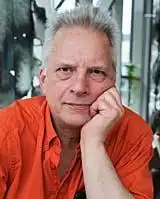 Stefan Stenudd
Stefan Stenudd




 Life Energy Encyclopedia
Life Energy Encyclopedia Qi — Increase your life energy
Qi — Increase your life energy